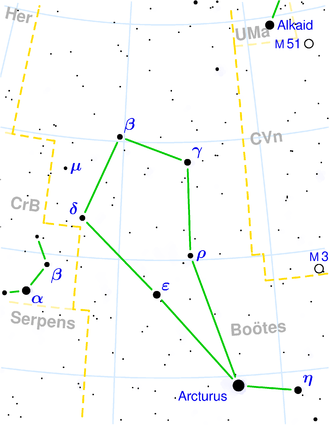NGC 5642
| Galaxy NGC 5642 |
|
|---|---|

|
|
| SDSS recording | |
| AladinLite | |
| Constellation | Bear keeper |
|
Position equinox : J2000.0 , epoch : J2000.0 |
|
| Right ascension | 14 h 29 m 13.5 s |
| declination | + 30 ° 01 ′ 35 ″ |
| Appearance | |
| Morphological type | E4 |
| Brightness (visual) | 12.9 mag |
| Brightness (B-band) | 13.9 likes |
| Angular expansion | 1.8 ′ × 1.3 ′ |
| Position angle | 130 ° |
| Surface brightness | 13.9 mag / arcmin² |
| Physical data | |
| Affiliation | LGG 383 |
| Redshift | 0.014363 ± 0.000070 |
| Radial velocity | (4306 ± 21) km / s |
|
Stroke distance v rad / H 0 |
(196 ± 14) · 10 6 ly (60.0 ± 4.2) Mpc |
| history | |
| discovery | Wilhelm Herschel |
| Discovery date | May 16, 1784 |
| Catalog names | |
| NGC 5642 • UGC 9301 • PGC 51751 • CGCG 163-064 • MCG + 05-34-52 • GC 3908 • H III 126 • h 1822 • LDCE 1061 NED008 | |
NGC 5642 is a 12.9 likes bright elliptical galaxy from the Hubble type E4 in the constellation Bootes and about 196 million light-years from the Milky Way center.
Together with PGC 51748 it forms a gravitationally bound double galaxy and was discovered on May 16, 1784 by Wilhelm Herschel with an 18.7-inch reflecting telescope, who called it “Two small stars with suspected nebulosity. Almost verified with 240 power ”.
